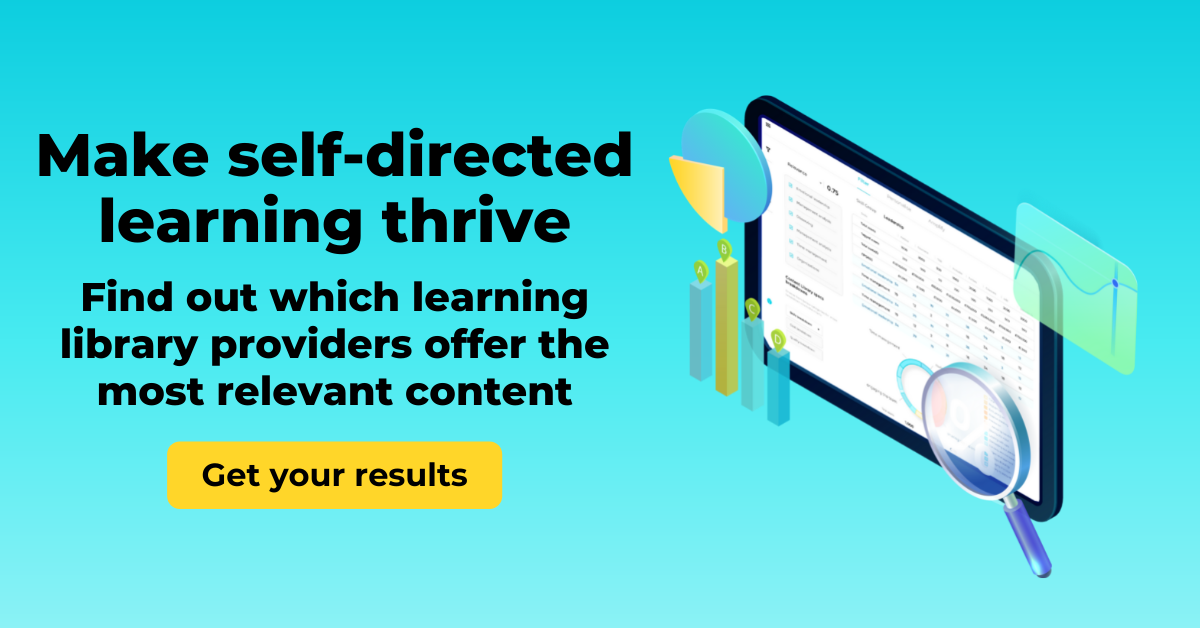L&D loves setting up false dichotomies. The most prevalent is between formal learning delivery and the ‘learner-centric’ self-directed approach. Formal learning is routinely denigrated. It's now synonymous with compliance training and that ugly LMS nobody uses.
We're obsessed with people who claim that they're ripping up the workplace learning rulebook. Old ways of doing things are thrown out. LinkedIn is full of alarmist claims that everything done in the past was wrong. Avoid it or become obsolete. And let’s face it, telling people that you deliver workplace training isn’t as sexy as saying you’re helping to build a continuous learning culture.
But it's a mistake to view formal and self-directed learning as oppositional. Of course, L&D teams need to go much further than implementing formal learning interventions, but the pendulum has swung too far in the opposite direction. We risk missing what it really takes to build a self-directed learning organisation.
Businesses are giving people easy access to a vast array of learning opportunities and expecting them to carve a path through it. But they can’t and they won’t because there isn’t context or direction for the experience.
"The Genius of the AND"
So how did we get here? A useful corollary comes from Jim Collins’ book Built to Last. He argues that visionary companies reject the ‘Tyranny of the OR’ - the rational view that can’t easily accept paradox. The view that cannot live with two seemingly contradictory ideas at the same time. Instead, these companies embrace the ‘Genius of the AND’ - instead of choosing between A OR B, they figure out a way to have both A AND B. For instance, given the choice between utility and beauty, Steve Jobs chose both.
Similarly, L&D should ditch a black and white worldview, and account for multiple perspectives. Formal and self-directed study approaches can't be thought of as antithetical. They're connected and need to work together in harmony to maximise impact. There can be no self-direction without direction.
How self-directed learning really works
If your business only consists of experts that know what they need to learn, know how to learn it, and can judge when they've learnt it, don't read any further. You're all set!
The reality is that this organisation doesn't exist. In one way or another, we're all novices in various aspects of our jobs. And this makes it difficult to direct our own learning strategy effectively. Most of the time, we don't know what we don't know. When given choices of what to learn, we usually avoid the unknown and opt for something we're comfortable with, or that we prefer.
To help people become self-directed, we all need direction and support before the training wheels come off. And this means L&D has a huge role to play in creating environments where self-directed learning can thrive. We can do this by providing context and direction.
A model of shared control
Autonomy plays a central role in learning motivation, but there can be too much of a good thing. It’s critical to allow a certain amount of freedom to learners. However, the range within which they can choose must be limited and must be aligned to what they need to learn and what they can handle. What Paul A. Kirschner & Mirjam Neelen advocate for is a ‘model of shared control’ where a learner’s choices are limited and support is gradually tapered off as it becomes less necessary.
Delivering this type of support isn’t easy, and organisations need technology (such as LXPs) that is designed to facilitate it. Filtering out the noise and getting the right learning to the right people involves scaffolding to guide learners through an experience. Filtered’s structured playlists allow organisations to do just this. Their purpose is twofold: provide just enough challenge to improve skills, but enough support for the learner to contend with the challenge. As they’re progressed, the challenge increases and support decreases to keep the perfect balance of autonomy and direction.
Once different learner’s paths diverge, you can deliver scaffolding that scales, through adaptive nudge campaigns and learning opportunities that are personalised to individuals’ unique needs and challenges as well as the needs of the business.
What's next?
In the coming weeks there will be plenty of predictions and advice for what to do in 2021. A lot of it will suggest there is a brand new way of doing things that you should adopt straight away. Our advice is to not reject it, but embrace the ‘Genius of the AND’ and try to consider the alternative view too.


